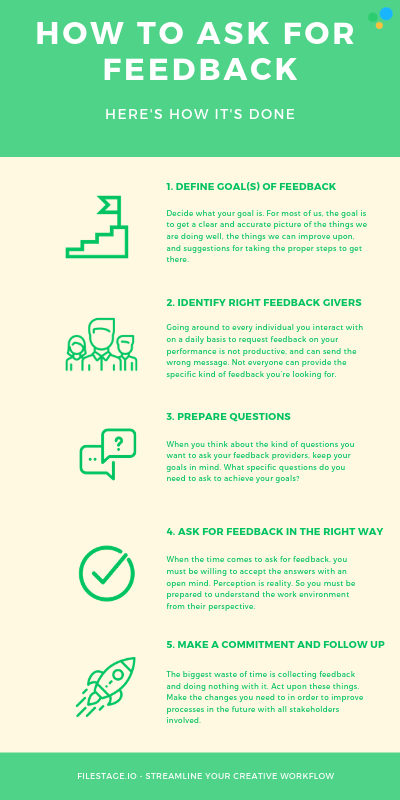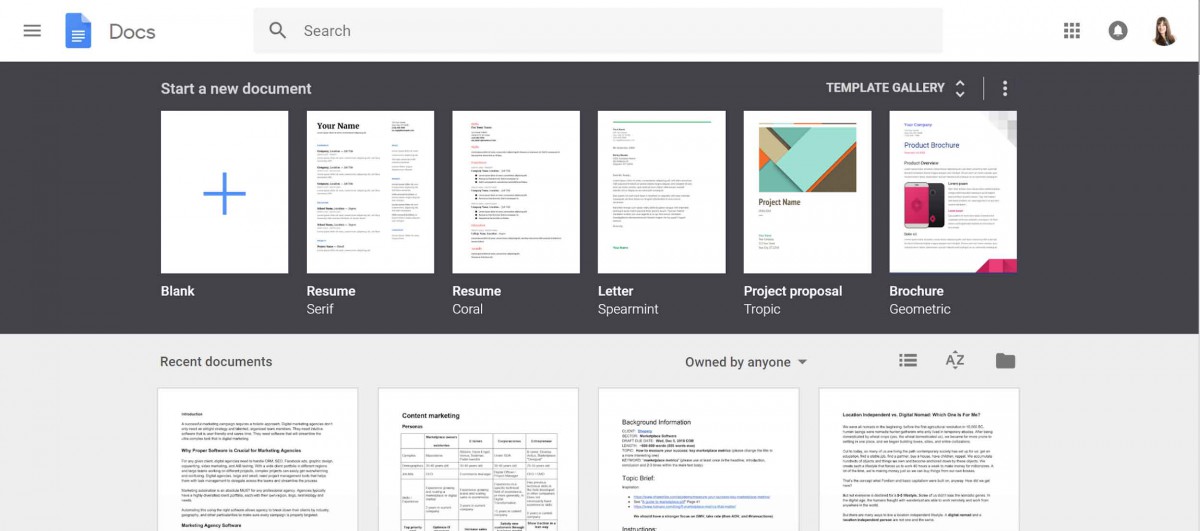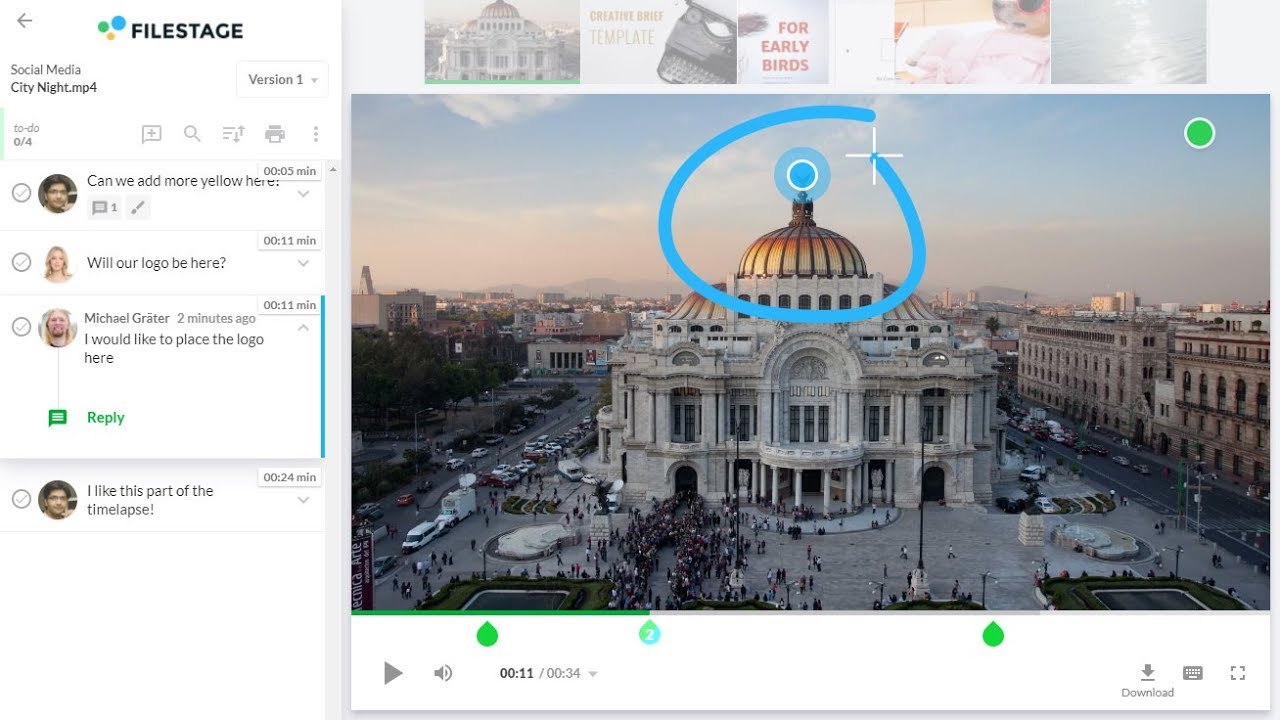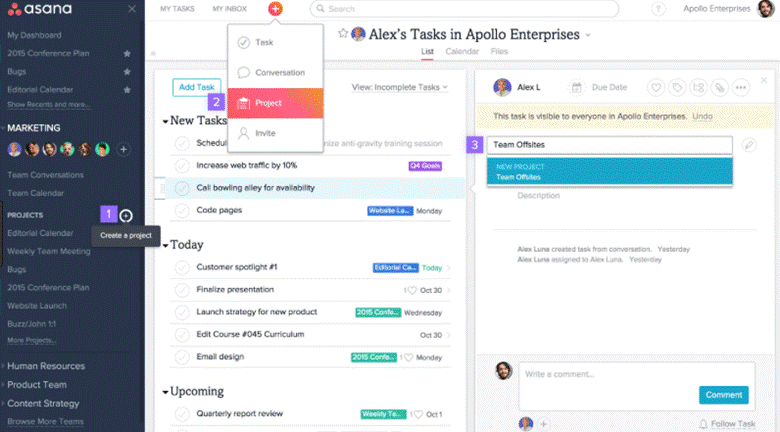Key Takeaways:
- Effective feedback is crucial for employee satisfaction and productivity.
- Annual reviews are insufficient; seek feedback throughout the year.
- Solicit feedback from mentors, colleagues, managers, clients, and partners.
- Define clear feedback goals and prepare targeted questions.
- Choose feedback sources wisely for comprehensive insights.
- Feedback reception should be open-minded and constructive.
- Follow up on feedback to demonstrate its value and implement changes.
An Introduction to Asking For Feedback The Right Way
In today’s work environment, a void of effective feedback mechanisms exists, resulting in lower employee satisfaction and, ultimately, lower productivity.
The primary driver behind lackluster performance management lies in the annual performance review.
While the performance review has its place, managers miss many opportunities throughout the year to offer practical and meaningful feedback to performers.
While you may not be able to change the current performance management mechanisms in your organization, you can take the matter into your own hands by eliciting feedback from your mentors, colleagues, managers, partners, and even clients.
Here’s how:
General Process of Asking for Feedback
In order to grow as a professional and have a thriving career, you need to have a clear idea of what you’re doing well, what can be improved upon, and how your actions are being perceived.
Without clear and honest feedback, there is no room for professional growth.
Existing problems will be left to fester, you may be left feeling confused and frustrated. Even if you ask for feedback, many people may be hesitant to be absolutely honest with you.
The process you follow for doing so is critical for creating an opportunity for truthful dialogue.
1. Define Goal(s) of Feedback
Decide what your goal is. For most of us, the goal is to get a clear and accurate picture of the things we are doing well, the things we can improve upon, and suggestions for taking the proper steps to get there.
Good feedback will help you avoid repeating the same destructive patterns in the workplace that only hold you back instead of propelling you forward. Good feedback enables you to grow as a manager, harnessing what you do well, and providing a path to improve upon in the areas of weakness.
You must be ready to receive the feedback you request. If you are not, you may be doing yourself a disservice. If in the process of obtaining comments and suggestions, you become defensive, or even if your demeanor changes slightly, you are sending the message to your reviewer that you are not open to receiving what they have to say. In the future, they will hold back, and eliciting honesty from them will be more difficult. Your goal should be to receive feedback with an open mind and a positive, accepting attitude. Remember, it is just as hard for many people to provide feedback as it is for you to receive it.
2. Identify Right Feedback Givers
Going around to every individual you interact with on a daily basis to request feedback on your performance is not productive, and can send the wrong message. Not everyone can provide the specific kind of feedback you’re looking for. When determining who can offer the best constructive criticism, think about the people who have the most interaction with you on a daily basis.
The more variety of position holders you can discuss your performance with, the more insightful the results will be. Everyone comes to work experiencing the environment with different perspectives. Feedback with more perspective may result in a well-rounded point of view regarding your path forward.
As a project manager, your feedback should come from colleagues, team members, your managers, and clients.
Colleagues
Solicit feedback from those colleagues who have an opportunity to see you in action on at least a near daily basis.
They could be individuals you partner up within meaningful ways on project management tasks or those who see how you interact with your project teams regularly.
Colleagues may be in the best position to offer you straightforward observations without fear of repercussion, as opposed to a non-manager since you are both on the same level.
Team Members
Anyone who contributes in projects you manage on a regular basis is a great source of useful feedback.
However, you may need to approach them with the reassurance that you want to hear their honest opinion.
Don’t automatically seek your favorite team member for feedback. Choose team members of different positions and points of view to obtain well-rounded observations.
Managers
In many traditional working environments, the only time you’re able to obtain quality feedback from your managers is during formal review time, which in many cases, happens only once a year.
Why wait a whole year repeating bad habits and non-productive patterns when you can regularly get the feedback you need to improve on your performance continually?
Then, when formal review time comes around you will have set yourself up well for advancement and recognition for your hard work.
Clients
Clients provide a unique perspective of your work since they interact more with the final product or service and your role in delivering it.
They are outside looking in on your company, which means they can provide a picture of how the customer base, on the whole, views the face or your organization.
How you represent your company image is just as important as the work you’re performing every day internally.
3. Prepare Questions
When you think about the kind of questions you want to ask your feedback providers, keep your goals in mind.
What specific questions do you need to ask to achieve your goals? If your goal is to improve relationships with team members, ask questions that specifically pertain the current working climate and interactions.
If your goal is to manage your time more efficiently, ask questions that solicit observations about where you could improve in managing your project.
Think about your specific goal, and fashion the questions that help you identify and formulate the answer. It may be that you want to see how you’re doing on a whole. A range of open-ended questions will help you obtain the relevant atmospherics.
Suitable Questions For Team Members
What kind of actionable feedback do I provide you about how you’re doing with your work? What do I do well now? What can I do better in the future?
How do you feel about my level of interaction with you and your work as a manager? Not enough, too much? How would you like to see it change?
In the last six months, how have I shown my care for the welfare of my team members? What would you like to see from me in the next six months?
Do you feel valued as a team member? What are the best ways to show I appreciate you and your contributions as a team member?
Have you felt there were gaps in my leadership on the last project? Do you have any suggestions on how I can improve in those areas in the future?
Rate my communication effectiveness. In what ways can I be more effective in communicating with the team?
What other observations or suggestions can you provide to assist me in being the best project manager and advocate for my team?
4. Ask for Feedback in the Right Way
When the time comes to ask for feedback, you must be willing to accept the answers with an open mind. Perception is reality. So, you must be prepared to understand the work environment from their perspective. If you become defensive or affected negatively by comments other professionals provide, you will be far less likely to receive honest responses in the future.
This doesn’t mean you have to have a face to face with every person to hear what could be the ugly truth right then and there. Many people are more honest when they aren’t confronted directly with the situation.
Feedback can be given in a variety of forms, as long as the understanding exists that you are asking for honest input to become a better manager.
You may need to reassure your colleagues and team members that you are ready to hear what they have to say without negative consequences.
When Should You Ask
You don’t want to ask so much that your colleagues begin to have the distinct impression you’re needy and unsure of yourself. But, you do want to ask for feedback at a consistent pace, and during important events.
Before And After Projects or Presentations
Ask managers for feedback before the start of something big. They can give you advice going forward that will help you execute the project successfully. Then, circle back around with them after project completion for a review of your performance and idea of how you can improve going forward.
During the Day to Day
Pick a timeframe, whether it be quarterly, or once a month to get a vitals check on your team members impression of you. By checking in with them regularly you’ll not only demonstrate your care for your team’s well being, but you’ll also be better able to resolve potential issues before they fester.
During Formal Performance Reviews
Formal reviews with your boss may be a bit one-sided. Don’t leave the process without asking your manager all the necessary questions that will help you improve going forward. Even if your boss has a very detailed review process, there may be some questions about your performance that they have failed to address.
How Should You Ask for Feedback
While direct face-to-face interaction is typically the most effective way of receiving feedback, it may not work for everyone or in every environment.
This is especially relevant if your team is spread out geographically or if you’re asking for feedback from a variety of stakeholders such as client partners or customers, and whether your feedback is project/product specific or a more formal perspective on the work environment as a whole.
Here are some popular means of soliciting feedback.
Online Feedback
Directly Into Files
Have contributors annotate comments, suggestions, changes, recommendations, etc. directly into files such as Google Docs or Word documents so that you can receive immediate feedback on a particular project or process.
Directly Onto a File in Your Browser
Use collaborative tools such as Slack or Filestage to allow multiple people to provide immediate feedback and contributions directly to project files you and your team is working on.
How to Ask for Feedback via Email
You can ask for professional or project related feedback by merely sending an email containing the appropriate questions.
Via a Survey
A great way to solicit feedback from a wide variety of people about a particular project, process, or service is by using tools such as SurveyMonkey or Typeform.
Via a Project Management Tool
Set up a feedback process in a project management tool such as Asana or Trello, to collect and compile clear feedback from all stakeholders involved in the project. Obtaining feedback from project management tools and collaborative tools are particularly useful for creative organizations such as marketing firms and advertising agencies.
Offline Feedback
Physical Survey
Surveys are an effective way of getting a consensus from a group of people quickly, such as your team members, particularly if you’re managing a large team. It may provide the basis for topics you can explore further and improve upon in the future with your team.
Conversation
The best way to achieve the most comprehensive feedback from your stakeholders merely is by having a conversation with them. Ask them open-ended questions to allow them to expand on their answers. And, ask questions that elicit a balance of positive responses as well as potentially negative ones. In other words, ask them what you’re doing well and what you’re doing not so well.
People are more willing to open up about their concerns if they’re given an opportunity to highlight what you’re doing well. And you may be more open to receiving the criticism this way, too. Just remember to focus on what you can do better in the future instead of fixating on past behavior. You don’t have to agree with what they’re saying, as long as you accept it without reservation.
5. Make a Commitment and Follow Up
The biggest waste of time is collecting feedback and doing nothing with it. Not all feedback you receive will be truly indicative of the quality of your performance, a particular project, process, or product, But you will notice recurring themes across the different feedback processes that should serve as indicators of what specific things need to be improved upon in the future.
Act upon these things. Make the changes you need to in order to improve processes in the future with all stakeholders involved. And when you have made those changes, circle back with those who have contributed input, and tell them what you have done. This will send them the message that you value their input, which will encourage them to continue contributing in honest and straightforward ways in the future.
Examples of How to Get Feedback
How to Ask for Feedback from Colleagues
Feedback related to project deliverable (such as a graphic or a video)
1. Goal(s) of Feedback
Your goal is to obtain an accurate impression of your deliverable from a variety of colleague perspectives.
2. Feedback Givers
Choose the stakeholder whose impressions are most important, such as the client or prospective clients, or potential customers.
3. Feedback Questions
What do you like about the graphic and why?
What would you like to see changed?
What is your ideal version of this product?
In what way does this graphic live up to your expectations?
In what ways has this graphic not met your expectations?
4. Ask for Feedback
Choose the method that’s best for soliciting accurate feedback within the timeframe you require.
5. Make a Commitment and Follow Up
Identify the trends in answers among the stakeholders you received feedback from. Prioritize and address those trends accordingly, and then follow up with the stakeholders with an update to your product.
Feedback Email template
Requesting Feedback for X Product
Dear Colleague,
I’m passing this product to you for the purposes of soliciting your honest opinion and insight into it. The more information you can provide regarding your opinion of this product, the better we can continually improve on our processes in producing it.
At your convenience, please help us by answering the following questions:
(insert questions here)
To make this product exceptional, I will review your feedback soonest and follow up with the actions we took based on your recommendations.
Thank you.
Feedback related to general self-improvement
1. Goal(s) of Feedback
Your goal is to get an honest snapshot of your performance as a project manager from colleagues around you who operate on the same level.
2. Feedback Givers
Fellow program managers, other colleagues who can provide insight from a peer point of view
3. Feedback Questions
If you were in my shoes, what is the first thing you would change about my management style going forward?
How would you define my management style? Do you think this is the most effective style, or is there room for improvement or alterations to the way I lead my teams?
What’s your impression of the way I interact with my team in terms of communication? Do you have suggestions for how I could communicate with them more effectively in the future?
What is the single most thing I need to improve on over the next six months? Why do you think it is the most important thing for me to focus on?
Do you feel team members are happy to be on a project with me? How can I improve my relationship with all team members?
4. Ask for Feedback
Face to face communication is the best way to ask for feedback for this purpose. But email communication may be effective, too.
5. Make a Commitment and Follow Up
Follow up with a face-to-face conversation stating what feedback you’ve taken to heart and how you’re making future changes to incorporate that feedback. Remember, you don’t have to agree with the feedback you receive or even make changes off of it. But you do need to pay attention to common themes found across all feedback given.
Feedback Email Template
Performance Improvement Feedback Requested
Dear Colleague,
I’m constantly working to improve myself, and I’d like to hear your thoughts about what I’m doing well in terms of performance management, and what areas I could improve upon. I would benefit most from opinions that are honest and sincere. I am ready to listen to all you have to offer and consider what I can change to improve my performance as a program manager.
At your convenience, please help me by answering the following questions:
(insert questions here)
To demonstrate my regard for your feedback, I will follow up with you, and communicate what actions I’ve taken to improve my performance in the future based off of your input.
Thank you.
How to Ask for Feedback from your Boss
Feedback related to project deliverable (such as a graphic or a video)
1. Goal(s) of Feedback
Your goal is to obtain an accurate impression of your deliverable from your boss’s point of view.
2. Feedback Givers
Your boss. Other higher-level managers that have perspective on the product.
3. Feedback Questions
What do you like about the graphic and why?
What would you like to see changed?
What is your ideal version of this product?
In what way does this graphic live up to your expectations?
In what ways has this graphic not met your expectations?
What suggestions do you have based off of your perspective and experience?
4. Ask for Feedback
Choose the method that’s best for soliciting accurate feedback within the timeframe you require.
5. Make a Commitment and Follow Up
Take each point your boss or other managers make seriously. They most likely have an expert point of view and experience on their side. Follow up with them to show that you value their input.
Feedback Email Template
Requesting Feedback for X Product
Dear Boss,
I’m passing this product to you for the purposes of soliciting your expert opinion and insight based on experience into it. The more information you can provide regarding your opinion of this product, the better I can improve upon my management processes in producing the best version of this product in the future.
At your convenience, please help me by answering the following questions:
(insert questions here)
I value your feedback especially, and I look forward to following up with the actions I took based on your recommendations.
Thank you.
Feedback related to general self-improvement
1. Goal(s) of Feedback
Your goal is to get an honest snapshot of your performance as a project manager from your boss.
2. Feedback Givers
Your boss.
3. Feedback Questions
Based on your own experience, what is the first thing you would change about my management style going forward?
How would you define my management style? Do you think this is the most effective style, or is there room for improvement or alterations to the way I lead my teams?
What’s your impression of the way I interact with my team in terms of communication? Do you have suggestions for how I could communicate with them more effectively in the future?
What is the single most thing I need to improve on over the next six months? Why do you think it is the most important thing for me to focus on?
Do you feel team members are happy to be on a project with me? How can I improve my relationship with all team members?
4. Ask for Feedback
Face to face communication is the best way to ask for feedback for this purpose. But email communication may be effective, too.
5. Make a Commitment and Follow Up
Follow up with a face to face conversation stating what feedback you’ve taken to heart and how you’re making future changes to incorporate that feedback.
Feedback Email Template
Performance Improvement Feedback Requested
Dear Colleague,
I’m constantly working to improve myself, and I’d like to hear your thoughts about what I’m doing well in terms of performance management, and what areas I could improve upon.
I would benefit most from opinions that are honest and sincere. I am ready to listen to all you have to offer and consider what I can change to improve my performance as a program manager.
At your convenience, please help me by answering the following questions:
(insert questions here)
To demonstrate my regard for your feedback, I will follow up with you, and communicate what actions I’ve taken to improve my performance in the future based off of your input.
Thank you.
How to Ask for Feedback from Clients
Feedback related to project deliverable (such as a graphic or a video)
1. Goal(s) of Feedback
Your goal is to obtain an accurate impression of your deliverable from one client or a variety of client perspectives.
2. Feedback Givers
Choose the stakeholder whose impressions are most important, such as the client or prospective clients, or potential customers.
3. Feedback Questions
What do you like about the graphic and why?
What would you like to see changed?
What is your ideal version of this product?
In what way does this graphic live up to your expectations?
In what ways has this graphic not met your expectations?
4. Ask for Feedback
Choose the method that’s best for soliciting accurate feedback within the timeframe you require.
5. Make a Commitment and Follow Up
Identify the trends in answers among the clients you received feedback from. Prioritize and address those trends accordingly, and then follow up with the stakeholders with an update to your product.
Feedback Email Template
Requesting Feedback for X Product
Dear Client,
I’m passing this product to you for the purposes of soliciting your honest opinion and insight into it. The more information you can provide regarding your opinion of this product, the better we can continually improve on our processes in producing it.
At your convenience, please help us by answering the following questions:
(insert questions here)
To make this product exceptional, I will review your feedback soonest and follow up with the actions we took based on your recommendations.
Thank you.
Feedback related to general collaboration and performance
1. Goal(s) of Feedback
Your goal is to get an honest snapshot of your performance as a project manager from the unique perspective of a client.
2. Feedback Givers
Clients, potential clients, customers
3. Feedback Questions
How do you feel about the communication we have had together over the course of this project? How do you feel I communicated best? In what ways would you change my communication?
Does your experience on this project live up to your expectations? In what ways?
What was your sense of our internal operational flow as a project team on a whole? Do you feel that the project progressed along smoothly, or were there bumps that could have been avoided or mitigated using a better approach?
Would you be inclined to working with me and my project team again in the future? Why or why not.
What other observations and recommendations can you provide?
4. Ask for Feedback
Email communication, face to face conversations, surveys, and collaboration tools are all appropriate methods for the nature of this feedback. Collaborative tools especially are useful for project managers who are handling projects that include multiple stakeholders and creative deliverables (such as graphics/images, videos or documents).
5. Make a Commitment and Follow Up
Always follow up with your clients to demonstrate how valuable their impressions and opinions are to you and your team.
Feedback Email Template
Performance Improvement Feedback Requested
Dear Client,
I’m constantly working to improve my project management skills and the performance of our team. I’d like to hear your thoughts about what we did well in terms of project development, and what areas we could improve upon. I would benefit most from opinions that are honest and sincere regarding your professional impressions of me both as a leader and as a representative for my company and my team. I am ready to listen to all you have to offer and consider.
At your convenience, please help me by answering the following questions:
(insert questions here)
To demonstrate my regard for your feedback, I will follow up with you, and communicate what actions I’ve taken to improve my or my team’s performance in the future based off of your input.
Thank you.
Conclusion
The single best way to gauge the success of your products, your performance, or your management is by asking for feedback. Seek a variety of sources for the broadest range of perspectives into your attributes and areas for improvement.
Each stakeholder, whether they be your boss, fellow manager, another colleague, team member, client, or potential client will have a little bit different things to say.
Identify the trends across the different perspectives as they pertain to your performance or the products/performance of your team, then incorporate those trends into your future management to improve both your own performance and the performance of the project you’re managing.





